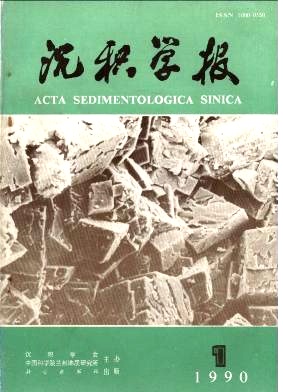APPLICATION OF SEMI- MARKOV PROCESS IN ANALYSIS OF THE DETAILED DEPOSITION
- Received Date: 1987-07-04
- Publish Date: 1990-03-10
Abstract: Probability of transition of semi-Markov process means that when point A of section just is located upper bound of ith lithic stratum probability Pij (1) of point B is in jth lithic stratum, point B is upper the point A and distance between point B with A is l.This probability can be decomposed as two events probability, the two events are in what follows: (1) In point A, the ith lithic stratum translats to the jth lithic stratum with only passing one step and thickness of the jth lithic stratum is lager than 1; (2) In point O that is between piont A and B, the ith lithic stratum translats to the jth lithic stratum with passing n steps (n = 2, 3, …0, this is that n-1 stuatum layering are contained between point A and O apart l1 it translats at once to jth lithic stratum in point O and the jth lithic stratum thickness is larger than 1- l1. For the 1th event, if only a stratum layering thickness distribution is gave, the event probability can be computed, if thicknees .distribution of n s tratum layerings can be gave, the Zth event probability can be easy computed. Thus the author supposes that n stratum layering thicknesses submit independently same parameter - distrbution: Among others x is the stochastic variable of stratum layering thickness, v, a are the distribu- tion parameters and v 0, a 0. As a result, probability density function of n stratum layerrings thickness sum can be derived from characteristic function of n independent stochastic variables sum distribution: Proceed to the next step, directly comput formula of probability of transition of semi- Markov process can be derived. The author has wrote specific computer program to calculat it by means of the disital integration. With the directly comut metheod the author has studied semi- Markov process appeared by A unite part in a detailed deposition section, the section presents deltaic sedimentary system effected by tide in a coal measures.A unite is oldest unite ofsystem.It separates B lithofacies constitutes (mudstone, divaricationg channel, tide way, tidal flat, distal bar, limestone, coal, tidal sand ridge) .Statistical analysis of 1 practice survey columns of A unite in this section shows state transition among the lithofacies constitutes having obvious Markov property and shows Γ-distribution is considerably perfect for fitting the stritum thicknees of lithofacies constitute. With the directly comput method the author calculates transition probability matrix or semi-Markov process among the lithofacies constitutes Q-mode factor analysis for the transition probabillity matrix obtains factors, the factors reflect effect factors of deposition environment.the preceding 3 factors effect main coal gather action of marginal deltaic basin, low deltaic plain, roof of deltaic plain below the water, distal bar building action, mutual action of river with tide. With facies unite of every column as sample, the author carries on step regression analysis of coal bed total thickness with deposition environment effect factors in the facies unite. F- testing and regression residual analysis show the regression epuation to be obvious statisticlly.This illustrates that espression of deposition environment control to coal thickness is in what follows: (1) To formation of thick-bedded coal fen plain of marginal deltaic is the fa vourablest; (2) Marginal deltaic basin deltaic plain below the water and low deltaic plain of riv er and tide development only form thin coal bed.
| Citation: | Jin Youyu. APPLICATION OF SEMI- MARKOV PROCESS IN ANALYSIS OF THE DETAILED DEPOSITION[J]. Acta Sedimentologica Sinica, 1990, 8(1): 133-142. |






 DownLoad:
DownLoad: